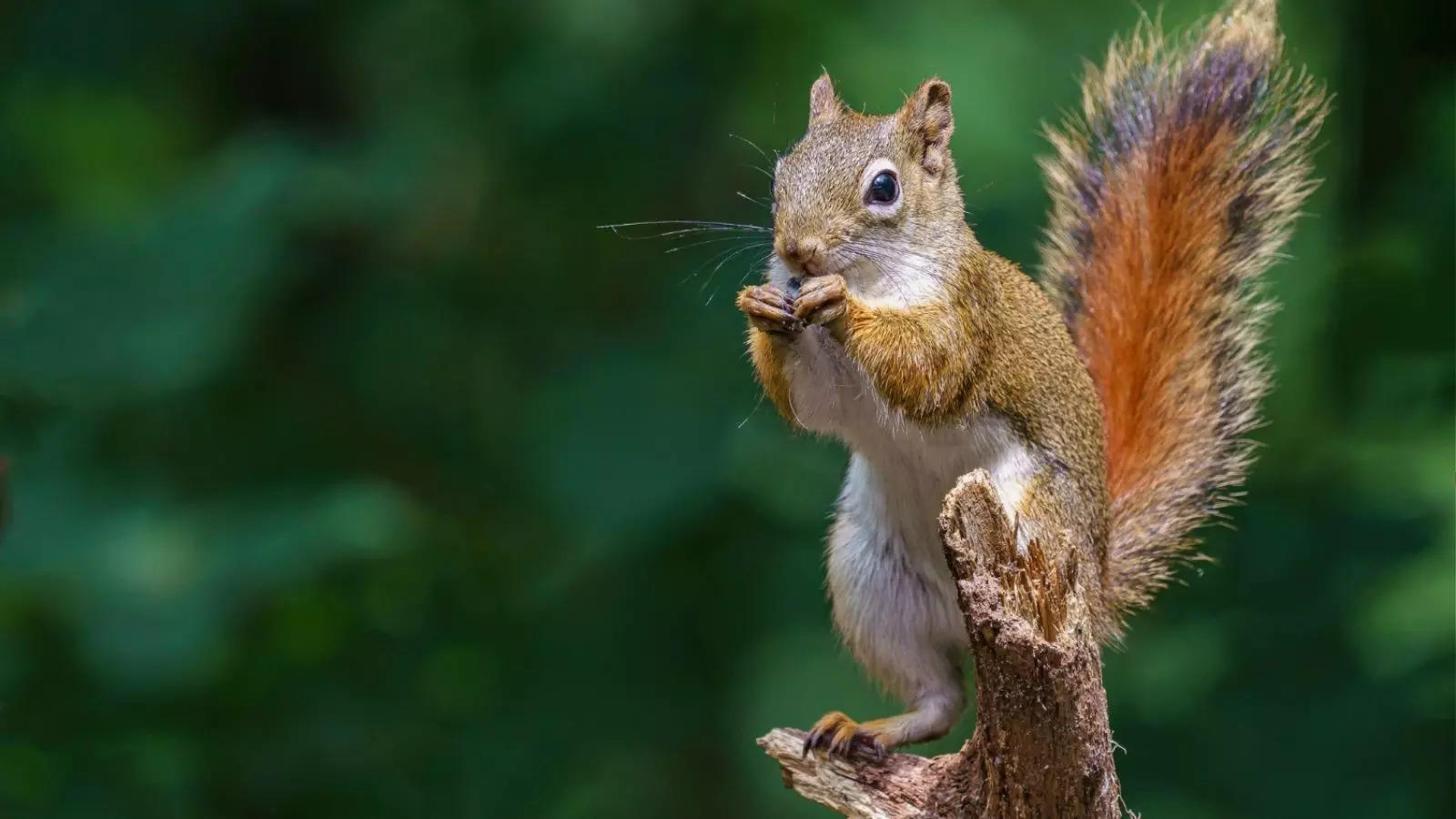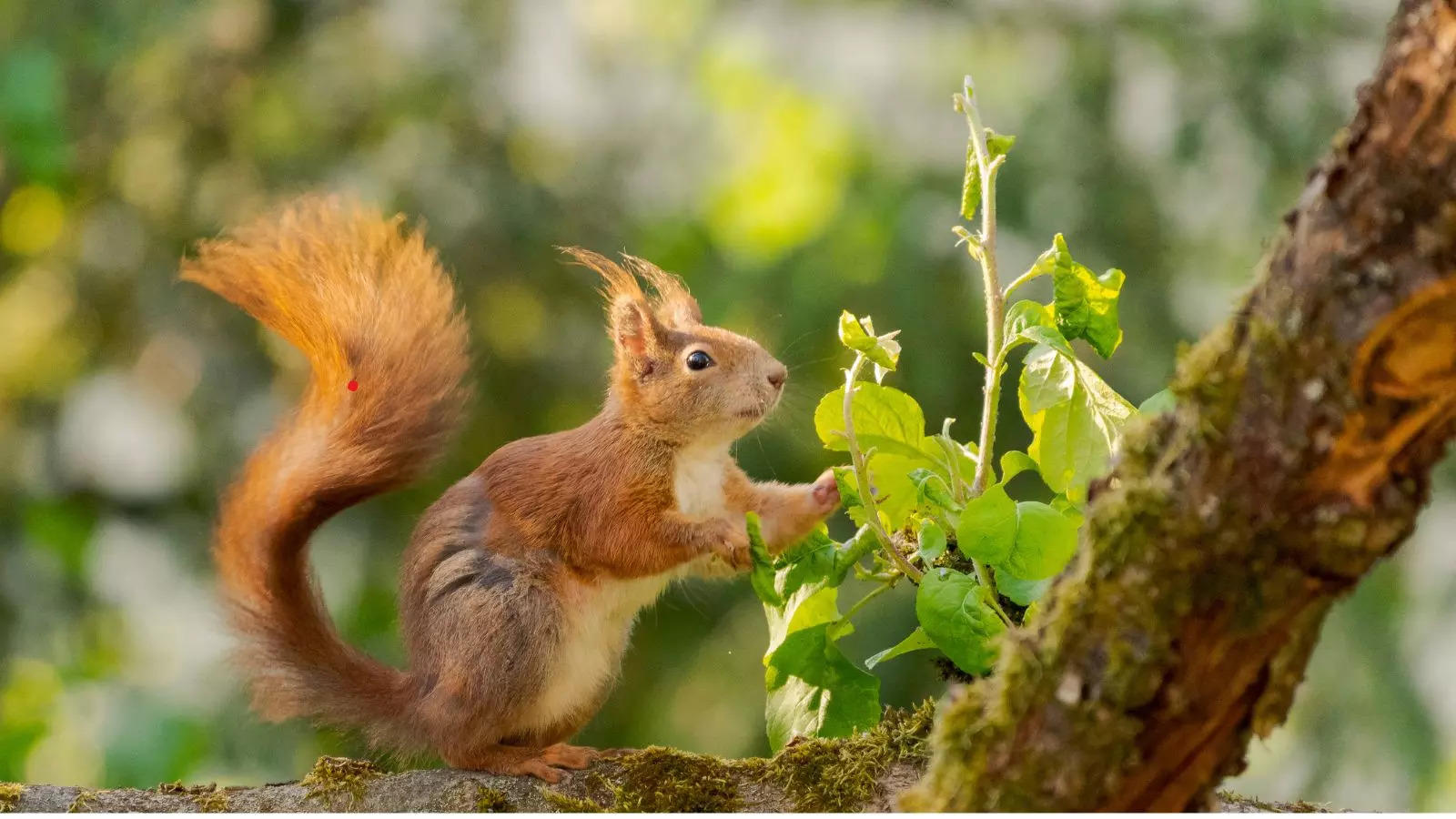
Did You Know Squirrels See The World In Just Two Colours?
Squirrels , those playful little creatures darting through trees and scurrying across parks, have a fascinating visual limitation that most people aren't aware of: they can only see in two colors. This type of vision is known as dichromatic vision , which means that squirrels perceive the world in a very different way than humans, who have trichromatic vision and can see a wide range of colors. Understanding how squirrels see the world can offer interesting insights into their behavior and survival strategies .
What is Dichromatic Vision?

Dichromatic vision refers to the ability to see only two primary colors, usually blue and green. This is due to the presence of two types of color receptors, or cones, in the eyes. Most humans have three types of cones—red, green, and blue—allowing us to see a full spectrum of colors. However, in squirrels, the absence of the third cone, responsible for detecting red, means that they cannot differentiate between reds and greens. For them, shades of red likely appear as gray or brown.
How Does Dichromatic Vision Affect Squirrels?
You might wonder how this limitation affects a squirrel’s daily life, especially given their fast and agile movements in nature. Interestingly, dichromatic vision has its advantages. For one, it allows squirrels to focus better on contrasts between objects rather than getting distracted by a broad range of colors. This is particularly useful in environments like forests, where green leaves dominate. The ability to detect contrasts rather than a spectrum of colors may help them spot potential predators or food sources more efficiently.
Additionally, dichromatic vision is not uncommon in the animal kingdom . Many animals, including dogs and some species of birds, also have limited color vision. Evolutionarily, it's believed that dichromatic vision helps animals in low-light environments, where distinguishing between many colors isn't as important as detecting movement or shapes.
Impact on Foraging and Survival
Squirrels rely heavily on their vision for foraging, but their dichromatic sight likely means they identify food by its shape and texture rather than its color. For instance, when searching for nuts, seeds, or berries, they focus on size and contrast rather than specific colors. The color limitation doesn’t hinder their ability to find food, as they use a combination of vision, smell, and memory to locate their meals.
In addition, the reduced color perception likely helps squirrels in detecting movement, which is crucial for spotting predators. Predators like hawks, snakes, or cats may blend into the green environment, but subtle movements are easier for squirrels to detect with their specialized vision.
While squirrels may not see the vibrant world of colors that humans do, their dichromatic vision serves them well in the wild. By focusing on contrasts and movement rather than a full spectrum of colors, squirrels can navigate their environments effectively, avoid predators, and find food. The fact that they can only see two colors is just another example of how animals have evolved unique traits suited to their survival.
Next Story
READ ON APP